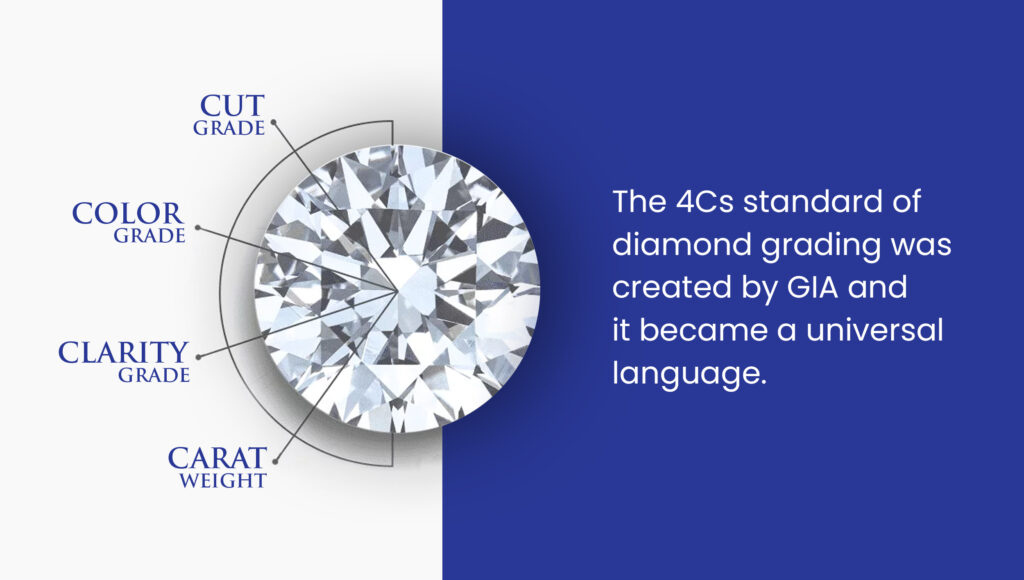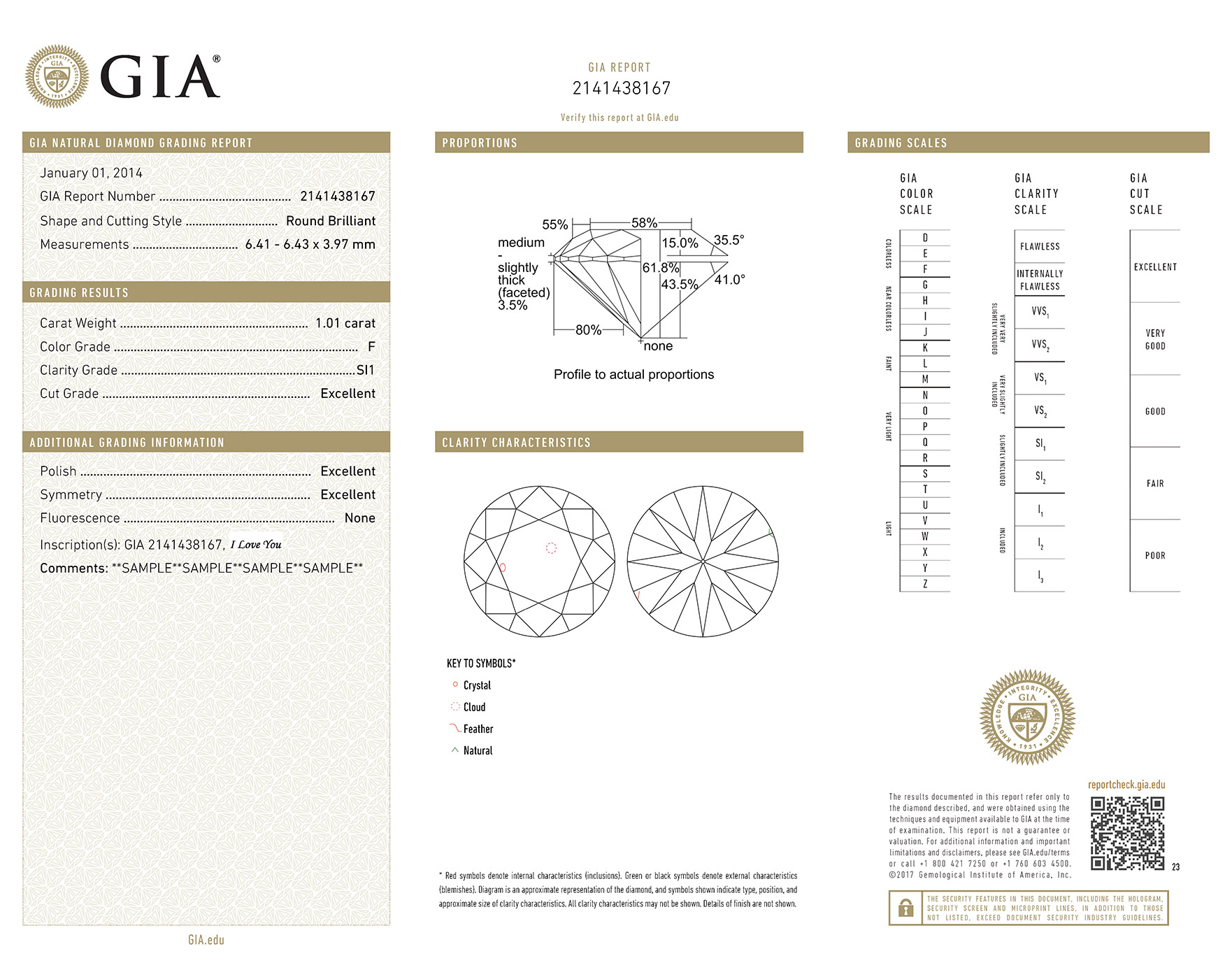What are GIA Certified Diamonds: Everything Explained
Posted by Hari Krishna
November 25, 2022
When we say a diamond is certified, it means that it has gone through a testing and grading process by an independent third-party lab and has a report which includes all the details about the diamond.
There are many reputable diamond grading laboratories in the world, such as the GIA, EGL, IGI, AGS, HRD, GSL, GSI, NGTC, etc.
Each of these labs have a distinct grading method and rating standards, as the diamond certification is subjective to labs.
However, amongst all, the Gemological Institute of America (GIA) is considered the most trustworthy lab in terms of its grading standards in the diamond & jewelry industry.
Actually, it is technically wrong to call it a GIA “certified” diamond because GIA only “grades” them. Even the document which has the result of the diamond assessment is called a report and not a certificate.
It has just become common practice to call it a GIA certified diamond but it is more like a misnomer.
So, being a GIA graded diamond means that the diamond has gone through a rigorous evaluation in a GIA lab and it has a report which contains all information
You must have heard about the iconic concept of diamond’s 4Cs (color, cut, clarity and carat). This standard of assessing a diamond was created by GIA.

Founded in 1931, GIA is an independent, nonprofit organization that does R&D in the gem industry, defines and sets grading standards for diamond quality, and educates gem professionals.
GIA ensures that the diamond grading standards are fully objective; it keeps its all operations isolated from all the commercial trade, pricing, or valuation of diamonds.
Over the years it has become the most dependable and reputable gemological laboratory. The assessment of loose diamonds is done using only the most sophisticated and updated instruments.
The results of which are recorded in a document called the GIA report.
There are various reports which can be made for a diamond. Depending on the owner’s request and type of diamond sent, these are the reports that GIA can issue
❖ Diamond Grading Report: Includes the full 4Cs assessment for diamonds weighing 0.15 carats or more.
❖ Diamond Origin Report: Includes the full 4Cs assessment with geographic origin and GIA report number laser inscription for diamonds weighing 0.15 carats or more
❖ Diamond Dossier: Includes the full 4Cs assessment with GIA report number laser inscription for diamonds weighing 0.15 -1.99 carat.
❖ Diamond E-Report: Includes the full 4Cs assessment for diamonds weighing 0.15 -2.99 carats.
❖ Diamond Focus Report: Includes the full 4Cs assessment with GIA report number laser inscription. Select loose, natural diamonds under 0.40 carats.
If you’re interested, you can check out the sample of all these reports available on their website.
But for the purpose of this blog, we will only explore details of the GIA diamond grading report which is the most popular.

Sample of a natural diamond grading report
Source: Gia.edu
As you can see, reading a GIA diamond report is easy and clear. You get information about the 4Cs, inclusions and everything else you need to know to make the right diamond purchase.
The report has been further elaborated in this video.
If you want to verify whether the report you have is an authentic GIA report, you can go to their website and do a report check.
Just enter your report number and you should be able to see it in their database.
No, every diamond is not a certified diamond and specifically not a GIA diamond.
Diamonds can be self-certified, non-certified or certified from other laboratories but a diamond can only be called a GIA diamond if it has been graded by GIA in one of its labs.
It is okay to buy non-certified diamonds under some circumstances and if you are looking to understand this in detail along with knowing the differences between certified and non-certified diamonds, you can read our dedicated blog.

However, GIA diamonds are really valuable and good diamond traders know the importance of selling authentic and verified diamonds so it is common practice to send eligible diamonds for a GIA grading.
Certified diamonds are relatively more expensive than non-certified diamonds. Diamond manufacturers factor the cost of grading in the diamond’s retail price. GIA being the most reputable of them all, does have a premium attached to its cost in comparison to other labs.

But you also have to consider that diamonds are anyway an expensive purchase and buying right is crucial. You don’t want to end up with inauthentic diamonds having paid a huge sum to the retailer already.
Thus it is advisable to go for a GIA graded diamond because it will secure your investment and give you something invaluable- peace of mind!
Reiterating that GIA “certified” is not the right word for it, actually anyone can send their diamonds for a GIA grading. You can personally drop off or ship your diamond for GIA grading at any of its 9 labs around the world.
Remember that GIA only grades loose diamonds having a carat-weight of at least 0.15 Cents. So if you have diamonds set in jewelry, you’ll need to take it off before sending.
If you are not a diamond trader and you are not sure how all this works, we advise you to consult a professional and seek assistance from a trusted jeweler.
Hari Krishna Exports is among the top 10 diamond companies of India and largest exporters of GIA certified loose diamonds, ranging from 0.18 cent to 50+ carats-sized diamonds in more than 9 shapes, including brilliant-round cut, FL to I3 clarity, and D to M Color across the 80+ countries of the world, including the USA, Hong Kong, China, Australia, Israel, the UK, Canada, etc.
Sign up here to receive the latest updates on diamond jewelry, industry trends or if you are interested in knowing about how we maintain sustainable practices being in the natural diamond industry.